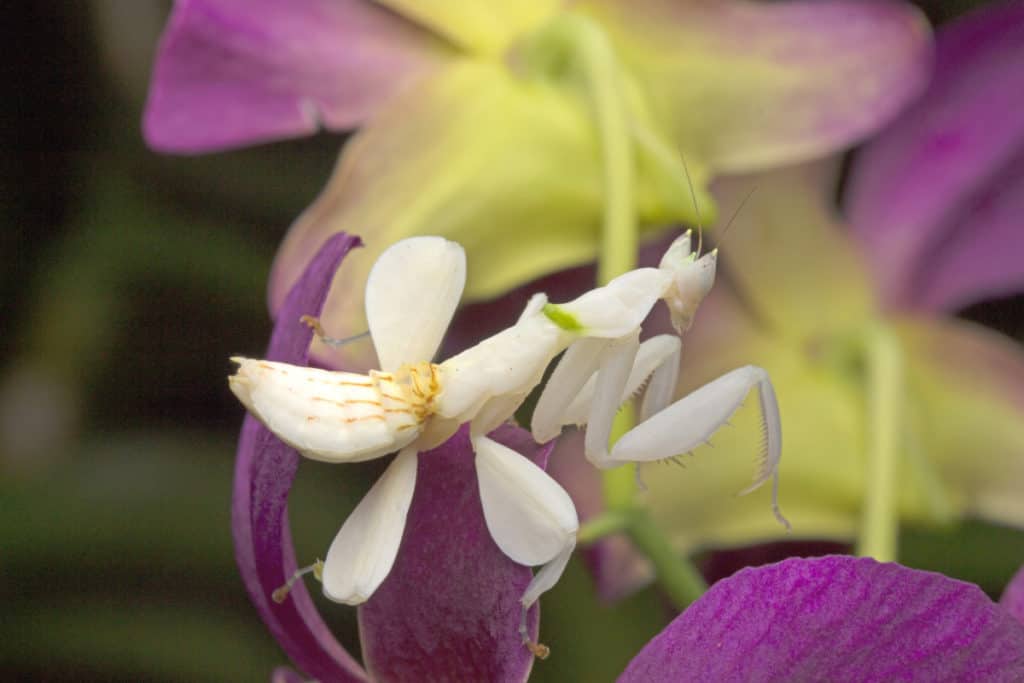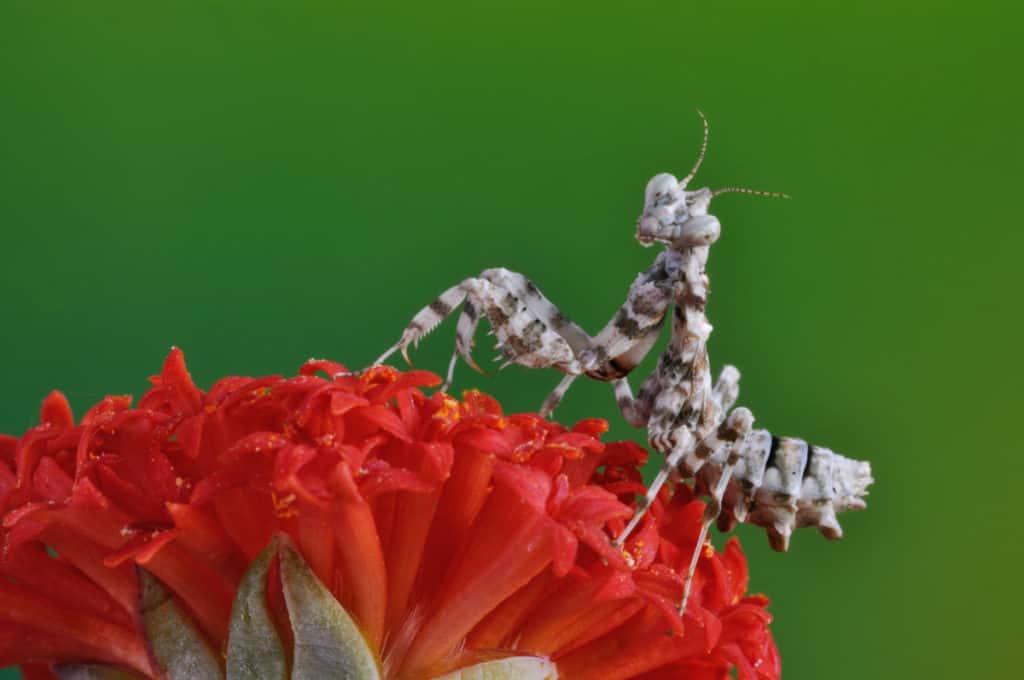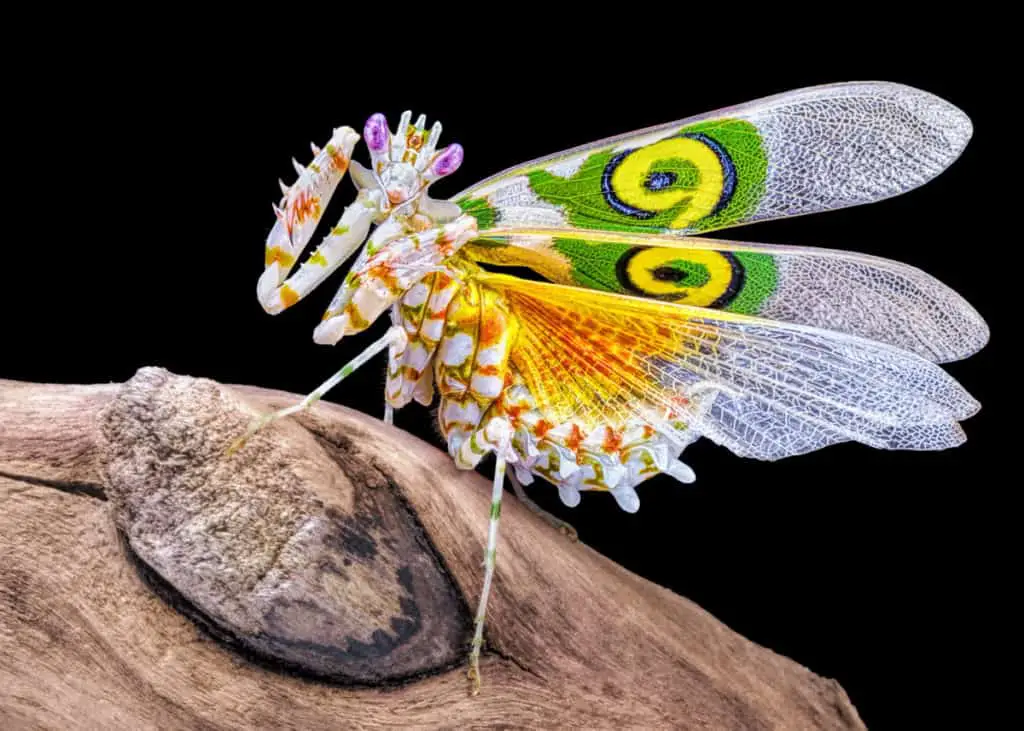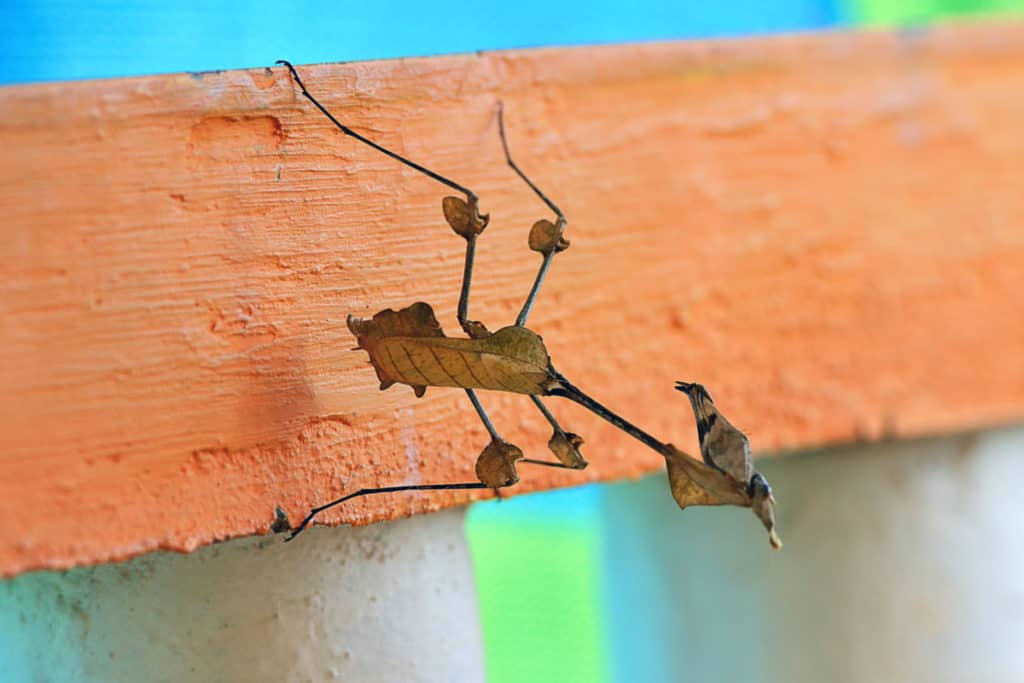Certain species of insects are known to come in a wide variety of colors, including butterflies, moths, and ladybirds. Some other insects, however, seem to be associated with just one trademark color.
One such example is the praying mantis; the very mention of the insect seems to conjure up images of a regal, emerald green predator making it pretty hard to imagine these graceful, yet fierce arthropods being any other color, let alone white.
So how likely are you to spot one? Are white praying mantises rare?
No, white praying mantises are not rare. Mantids generally turn white following the molting process. Once their exoskeleton hardens, they will regain their natural coloring. Some species like the Orchid Mantis and the Spiny Flower Mantis have a lot of white as part of their natural coloring.
Keep on reading and we’re certain you’d find a few surprising things you never knew about one of nature’s deadliest and most graceful hunters.
Mantids And Molting
Aside from species that have white as part of their natural coloring the most common time you will see a praying mantis that might look a shade of white is after molting.
A newly molted praying mantis will have an ivory coloring or look somewhat translucent following which it will gradually regain its original coloring.
Why Do Praying Mantis Molt?
Praying mantises belong to one of the largest families of living things on the globe: arthropods.
Members of this family share a great deal in common including jointed limbs, a tendency to lay a large number of eggs, and bodies divided into segments.
They also have the distinction of possessing their very own body armor, which is referred to as their exoskeleton.
Their exoskeleton serves to protect their vital organs in addition to bestowing a super cool look on them. And yet it also means they are faced with a dicey problem since those organs grow bigger while the suit remains the same size.
Thankfully, this outer covering can be taken off and replaced with another through a process referred to as molting, ensuring the critters get to benefit from a brand new suit of armor which is the appropriate size for their growing organs at specific stages in their lives.
The Molting Process
A praying mantis will undergo five to ten molts on average in its lifetime. Its first molt will occur within a fortnight of hatching. Subsequent molts will take place every two weeks and it will take about six months for a mantid to go through them all.
A praying mantis abstains from food for about two days before the process begins. Once it has shed its old carapace, it will also ‘fast’ for the same length of time while it waits for its new exoskeleton to harden.
Moisture is important during this process since it reduces the likelihood of any mishaps occurring while the mantid wriggles out of its old chitinous covering.
If you are a pet owner, you need to spray your mantid’s enclosure once or twice a day with water depending on their needs to keep their surroundings sufficiently humid.
You’ll also need to avoid placing food in their enclosure while they molt to prevent your pet’s dinner from turning the tables in a stunning plot twist and munching on your mantid.
Mantids With White Coloring
While albino mantids do not exist, certain mantises come with a bit more white in their coloring than others making them look especially unique.
We are going to take a look at the following mantids:
- The Orchid Mantis (Hymenopus Coronatus)
- The Thistle Mantis (Blepharopsis Mendica)
- The Spiny Flower Mantis (Pseudocreobotra Wahlbergii)
1. The Orchid Mantis (Hymenopus Coronatus)
Especially enchanting but no less dangerous to unsuspecting pollinators, this species is renowned for its delicate coloring which is an exquisite blend of white and pale pink.

The orchid mantis is native to southeastern Asia, is one of the prettiest species of mantids available, and resembles a moving flower, albeit one with powerful mandibles and legs to match.
But its beautiful coloring is by no means all there is to the orchid mantis: this hexapod is actually capable of changing its colors to suit its background, making it the arthropod equivalent of a chameleon.
2. The Thistle Mantis (Blepharopsis Mendica)
The Thistle Mantis has a beautiful pattern of cream, with green stripes.

However, a few of them are actually beige and white making them look almost white or rather pale.
Additional interesting facts about them include their relative tolerance towards other members of their species (however, they will still take a bite out of a nearby relative if possible) and their tolerance for dry climates.
3. The Spiny Flower Mantis (Pseudocreobotra Wahlbergii)
The Spiny Flower Mantis has large white wings with bold patterns that make this mantid seem more like a close cousin of the butterfly or the moth at the very least, rather than a relative of the cockroach or termite.

The body of this species is also cream with green or yellow stripes and those which come with paler stripes can seem almost ivory in color.
The Spiny Flower Mantis is really an amazing species. If you are interested we have a complete guide to this species of mantis, The Spiny Flower Mantis: Your Complete Guide.
Other Mantids With Unusual Coloring
Praying mantises with bands or splashes of white on their wings and bodies are pretty special, but are by no means the only mantids that are unique in terms of color.
Here are some members of this large family which come with colors you would not usually associate with any mantid:
Vespamantoida Wherleyi
A recently discovered species in the Peruvian Amazon, this mantid comes in vivid shades of fiery red.
But it is its form that is the most surprising of all: this six-legged master of mimicry closely resembles a wasp and even does its very best to move like one too.
The Ghost Mantis (Phyllocrania Paradox)
The ghost mantis is remarkable for its uncanny resemblance to dry foliage and its range of colors which include dark bronze and pale gold.

The diminutive mantid is also one of the most tolerant praying mantises and can actually be placed with other ghost mantids since none of them will attempt to gobble the other up for supper.
If you would like to know more about the Ghost Mantis then check out this article we have written, The Ghost Mantis: Your Complete Guide
The Wrap Up
In spite of the fact that most mantids are green in color, they actually turn white (temporarily) following molting.
A few species also come with splashes or bands of white and can look rather pale as a result, or even striking due to the presence of alternating bands of color.
Others such as the orchid mantis may be mostly white and can even alter their color to blend in with their surroundings.
The fact that it is also possible to find mantids that come in vivid scarlet, rich brown, and light bronze hues simply confirms the fact that these arthropods deserve to be considered some of the most remarkable insects on the planet.
If you would like to know more about praying mantis then check out some of the other articles we have written about them:
Do Praying Mantis Change Color?
What Do Baby Praying Mantis Eat?
The Giant Asian Mantis: Your Complete Guide
Praying Mantis Vs Stick Bug. Are They The Same Thing?
Sources
https://www.accessscience.com/content/molting-in-arthropods/BR0405171
https://www.gazettenet.com/Earth-Matters-19936554
https://news.mongabay.com/2019/10/praying-mantis-wasp-mimic-new-species-amazon/
https://www.nytimes.com/2016/12/05/science/secrets-of-the-orchid-mantis.html
